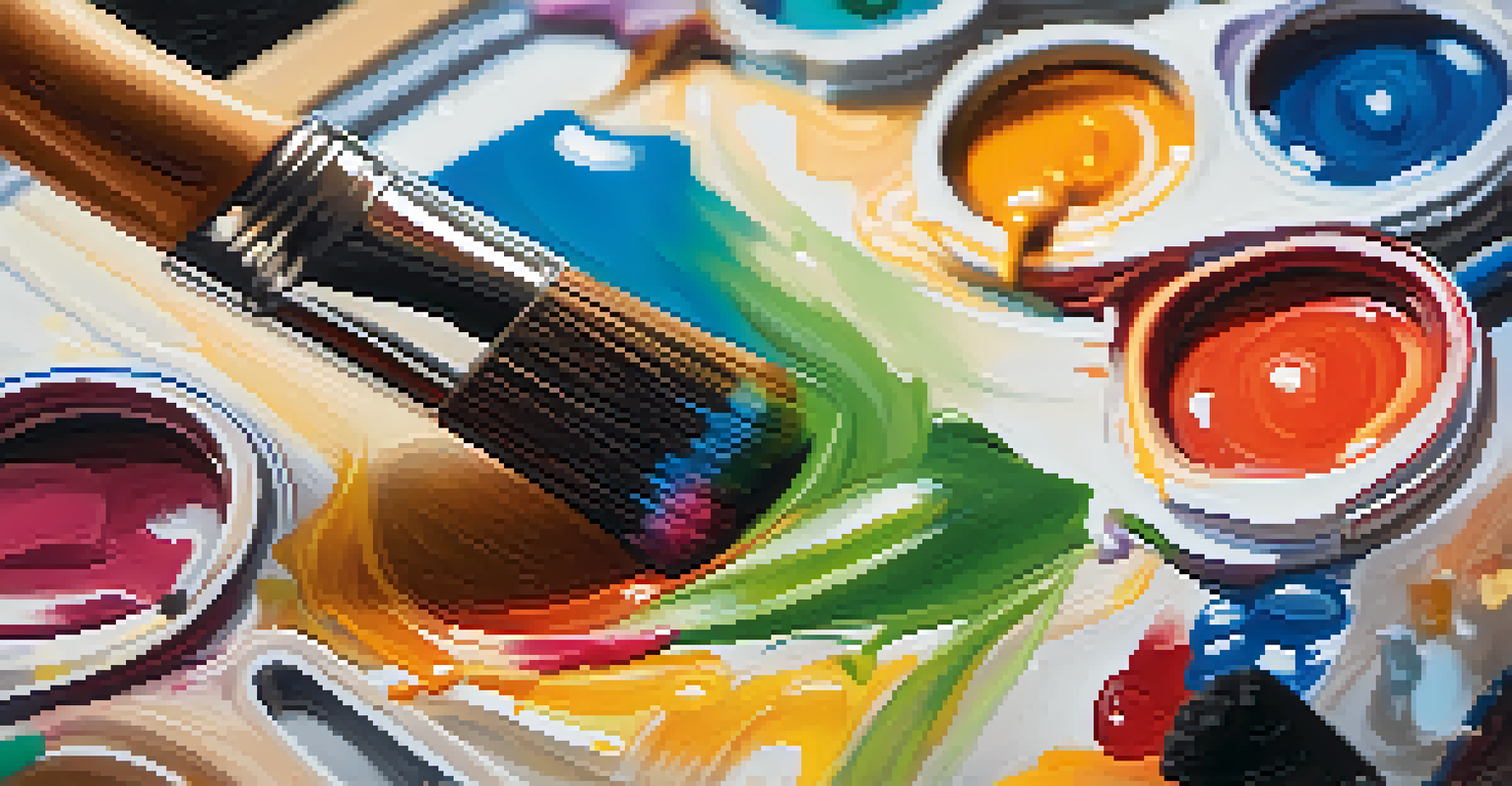How Art Therapy Helps Trauma Survivors Express Emotions

Understanding Art Therapy and Its Benefits
Art therapy combines creativity with psychological support, allowing individuals to explore emotions in a non-verbal way. This therapeutic approach helps trauma survivors communicate feelings that might be too painful to express through words. By engaging in art-making, participants can connect with their inner selves and process complex emotions safely.
Art is not what you see, but what you make others see.
One of the key benefits of art therapy is that it fosters self-expression. Survivors of trauma often struggle to articulate their experiences, and art provides an alternative outlet. Whether it's painting, drawing, or sculpting, engaging in creative activities can help unlock feelings that have been bottled up inside.
Moreover, art therapy encourages a sense of empowerment. As individuals create, they gain a sense of control over their narrative, which is often disrupted by trauma. This reclaiming of their story can be a crucial step in their healing journey.
How Creativity Aids Emotional Expression
Creativity offers a unique way to express emotions that might otherwise feel overwhelming. For trauma survivors, engaging in creative activities can be a form of catharsis, allowing them to release pent-up feelings. Just like how a storm clears the air, creating art can clear the emotional fog that trauma often brings.

Art serves as a bridge between the conscious and subconscious mind. When individuals draw or paint, they tap into deeper layers of their psyche, often uncovering emotions that were buried. This process can illuminate feelings of anger, sadness, or joy, providing a clearer understanding of their emotional landscape.
Art Therapy Enhances Emotional Healing
Art therapy allows trauma survivors to express their emotions creatively, facilitating healing and self-discovery.
Additionally, the act of creating can shift focus away from distressing memories, offering a momentary respite. As survivors immerse themselves in art, they may find themselves in a flow state, where worries fade away. This shift not only aids in emotional expression but also promotes mental well-being.
The Role of the Therapist in Art Therapy
Art therapists play a vital role in guiding individuals through their creative process. They provide a safe, supportive environment where trauma survivors can express themselves without judgment. By facilitating discussions about the artworks created, therapists can help clients gain insights into their emotions and experiences.
The greatest respect an artist can pay to music is to give it life.
Moreover, therapists are trained to recognize symbolic meanings behind the art. For example, a dark, chaotic painting might reflect feelings of despair, while bright colors could signify hope. Understanding these symbols helps survivors connect with their emotions more deeply and can lead to significant breakthroughs in their healing.
The therapist-client relationship also fosters trust, which is crucial for trauma survivors. As they build rapport, clients may feel more comfortable sharing their thoughts and feelings, leading to a more profound therapeutic experience. This supportive dynamic can be a transformative aspect of the healing process.
Different Artistic Mediums Used in Therapy
Art therapy isn't limited to just one medium; it encompasses a variety of creative forms. From painting and drawing to collage and sculpture, each medium offers unique ways to express emotions. For instance, painting might allow for more vivid emotional expression, while clay modeling can provide a tactile way to engage with feelings.
Using different mediums allows clients to experiment and find what resonates most with them. Some may prefer the fluidity of watercolor, while others might feel more grounded using pastels or acrylics. This exploration can be an exciting part of the therapeutic process, encouraging self-discovery.
Therapists Guide the Creative Process
Art therapists provide essential support and insights, helping clients navigate their emotional landscapes through their creations.
Additionally, incorporating mixed media can enhance emotional expression even further. Combining different materials can symbolize the complexity of trauma, allowing survivors to represent their experiences in a multifaceted way. This approach not only enriches the creative process but also mirrors the intricacies of healing.
Building Community Through Art Therapy
Art therapy can also foster a sense of community among trauma survivors. Group sessions allow individuals to connect with others who share similar experiences, reducing feelings of isolation. This communal aspect can be incredibly healing, as participants realize they are not alone in their struggles.
Sharing artwork in a group setting can create a safe space for vulnerability. When individuals display their creations and share their stories, it often encourages others to do the same. This exchange can lead to powerful moments of connection and understanding, reinforcing the idea that healing is a collective journey.
Moreover, group art therapy can enhance motivation and accountability. As participants witness each other's progress, it can inspire them to engage more deeply in their own healing process. This supportive environment can be a catalyst for personal growth and emotional resilience.
Success Stories: Transformative Outcomes of Art Therapy
Many trauma survivors have experienced transformative outcomes through art therapy. For instance, a survivor of abuse may find solace in creating a visual representation of their journey, allowing them to process their trauma and highlight their strength. Such stories of healing can be incredibly inspiring for others on similar paths.
Clients often report feeling a renewed sense of hope and purpose after engaging in art therapy. By expressing their emotions creatively, they may discover new coping strategies and ways to manage their feelings. These positive shifts can lead to improved mental health and overall well-being.
Community Support in Group Sessions
Group art therapy fosters connection among participants, reducing isolation and enhancing motivation for healing.
The success of art therapy is not just anecdotal; numerous studies have shown its effectiveness in helping trauma survivors. Research indicates that individuals who participate in art therapy experience reduced symptoms of anxiety and depression. These findings underscore the profound impact that creative expression can have on emotional healing.
Getting Started with Art Therapy
If you or someone you know is considering art therapy, the first step is to find a qualified art therapist. Look for professionals who are trained in both art therapy techniques and trauma-informed care. It's essential to choose someone who creates a safe and supportive environment for healing.
Many therapists offer introductory sessions to help clients understand the process. During these sessions, individuals can discuss their goals and any concerns they may have. This initial meeting is a great opportunity to gauge whether the therapist's approach aligns with your needs.

Lastly, remember that art therapy is a personal journey. Everyone's experience will be unique, and it's essential to approach it with an open mind. Whether you’re using it as a standalone therapy or as part of a broader treatment plan, art therapy can be a powerful tool for emotional expression and healing.